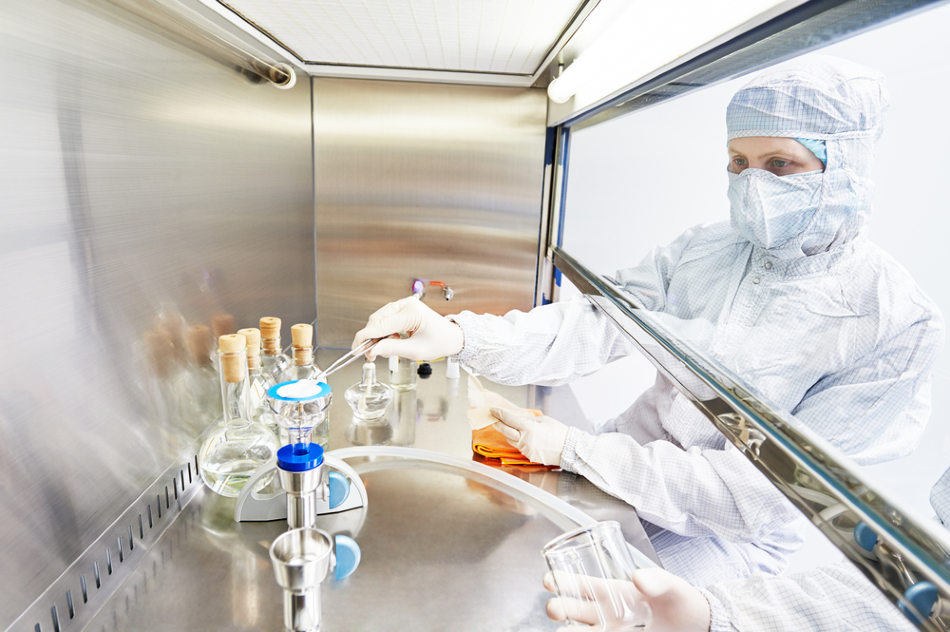
Image Credit: Dmitry Kalinovsky/Shutterstock.com
Regardless of whether a laboratory has been designated for microbiology or chemistry research, there are several types of equipment that should be found in every laboratory.
Personal Protective Equipment in Laboratories
Typically provided by the employer, personal protective equipment (PPE) is equipment that should be worn by any workers who can potentially be exposed to hazardous substances and/or materials while working in the laboratory.
To determine what type of PPE is appropriate for a given laboratory’s needs, employers are required to perform a hazard assessment, which allows for any physical and/or health hazards to be identified. Once the hazard assessment has been conducted, employers are responsible for not only providing the appropriate PPE to their employees but must also ensure that all employees are trained on how to use and care for their PPE properly.
In general, PPE can be divided into six major categories, which are eye and face, head, foot and leg, hand and arm, body and hearing PPE. Within a laboratory, goggles and/or face shields are typically used to protect the eyes, eye sockets and facial area of workers from potential chemical splashes or other objects.
Protection of the hands is typically achieved through using chemical-resistant gloves, such as those comprised of butyl rubber, latex or nitrile. Furthermore, in addition to requiring that individuals working in laboratories wear full-sleeved shirts, long pants and close-toed shoes. Laboratory coats are also typically used to ensure full body protection against potentially harmful physical agents or toxic substances.
Equipment for Laboratory Emergencies
Any laboratory that utilizes electrical equipment and/or handles flammable materials is at risk of a fire. It is therefore of the utmost importance that every laboratory, particularly those that house flammable substances have a fire extinguisher present in an easily accessible location.
Furthermore, all individuals who are working in a laboratory should be properly trained on how to use the fire extinguisher if a fire occurs. In addition to a fire extinguisher, fire blankets are also critical for laboratories that commonly handle flammable liquids. If an individual’s clothing catches fire, a fire blanket can be used as a last resort to smother and extinguish the flames.
If an individual does not wear the proper eye protection when working in the lab and a chemical and/or piece of broken glass enters their eyes, the worker must wash out the foreign material from their eye sockets immediately. For this type of emergency, eyewash stations, which should be present in any laboratory, are critical. An individual in this type of situation should immediately use the eyewash station to flush their eyes multiple times to reduce the chance that permanent damage or blindness occurs.
Even when an individual uses a laboratory coat and other appropriate PPE, it is possible that hazardous chemicals can still come into contact with the worker’s skin and cause irreversible damage. If this occurs, all contaminated clothing should be removed immediately, and the affected individual should utilize a safety shower. Safety showers are typically activated by the pulling of an overhead handle, which allows water to immediately pour out and drench the individual that has been potentially contaminated.
Safety Equipment in Lab Settings
Both laboratory fume hoods and biological safety cabinets, which can otherwise be referred to as biological hoods, are important equipment that any laboratories handling chemicals and biological substances, respectively, should have.
A chemical fume hood, which can also be referred to as a laboratory fume hood, is one type of engineering control that is used to reduce the exposure of laboratory workers to potential hazards, such as flammable and/or toxic chemical agents.
Although both a chemical fume hood and a biological hood can both be referred to as “hoods,” these two engineering controls function very differently. For example, fume hoods primarily provide personnel protection, whereas biological hoods, which can also be referred to as biosafety cabinets, provide environmental, worker and product protection.
References and Further Reading
Disclaimer: The views expressed here are those of the author expressed in their private capacity and do not necessarily represent the views of AZoM.com Limited T/A AZoNetwork the owner and operator of this website. This disclaimer forms part of the Terms and conditions of use of this website.